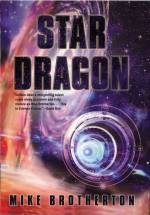Search
A Cheat Sheet for Space Travel
February 29th, 2008
The students in my Science and Science Fiction course are getting into the concept of alien worlds and building star systems, but if you want humans involved, you have to have some idea about how to get off the Earth, around the solar system, and across interstellar space. My favorite single resource for this is The Starflight Handbook: A Pioneer’s Guide to Interstellar Travel by Mallove and Matloff. The book has a nice summary of the basics of rocketry up through some pretty way-out ideas, along with the real equations you need to calculate the details of your story (e.g., for continuous acceleration and relativistic rockets). I’ve already got them reading a bunch of books and stories this semester, and beyond some basic gravity, laws of motion, and relativity, I don’t expect them to read this entire text, too. So I promised them I’d write them a brief guide, a “cheat sheet” if you will, summarizing some basic ideas about space travel technology in one place.
Disclaimers: this is supposed to be a handy guide and won’t necessarily be comprehensive. I will try to supply some easy to follow online links when I can find them (and sorry for the high fraction of wikipedia links, but they’ve gotten pretty good).
Rockets:
In Earth’s atmosphere planes can fly by using the flow of air around a wing to generate lift. The “air” in space, AKA the interstellar medium, is akin to vacuum (not quite, but close enough for most applications). A rocket is the most straightforward way of moving in space, exploiting the conservation of momentum: throw something one way, move the other. You want to throw out the something — propellant — as fast as possible for maximum effect. Rockets are effective, but limited as you have to carry a lot of fuel to generate the thrust to get anywhere fast. One benefit of rockets, and most spacecraft, is that you only need to apply thrust once in a while, coasting in between, to get places. And don’t forget that you have to worry about slowing down at the destination, too.
Conventional (Chemical Rockets). These are what you see used in launches today, and they come in two types: liquid and solid. Solid rockets are ignited and burn through everything in one fell swoop. Liquid rockets use substances like kerosene or liquid oxygen (LOx). These aren’t close to being the best propellants theoretically, but they represent a technology we’ve mastered and can get us off the surface and generate enough thrust to give large payloads escape velocity. With the help of some gravity assists, velocities can be achieved to provide interplanetary travel via Hohmann transfer orbits or with the use of gravity assists.
Electrical (Ion Rockets and Rail Guns). Instead of using chemical reactions or controlled explosions (violent chemical reactions) to expel propellant, electricity is used. Electromagnetism can be used to give larger exhaust velocities, thus making (ion) engines more efficient, although they tend to be low thrust. NASA has already developed and tested an ion engine. A rail gun represents a related technology that can be used for thrust or as a weapon (check out wicked video of total DESTRUCTION).
Nuclear. Nuclear reactions can also be used to heat propellant and provide high exhaust velocities and thrust. This technology would not be hard to develop and would be good for a lot of applications, but political considerations make implementation difficult. Even putting up RTGs for deep space missions caused concern and protests (see Carl Sagan’s take back in 1989).
Nuclear Pulse. I’m going to lump in nuclear pulse rockets in with rockets in general, even though they aren’t the same sort of critter. The idea here is to blow up a nuclear bomb and be pushed ahead by the explosion. Sounds crazy and dangerous, but it can be damn effective and represents the best and easiest way to reach high velocities not only for interplanetary travel, but also interstellar travel. Check out the Orion and Daedalus projects.
Anti-Matter. Anti-matter represents the ultimate in rocket efficiency, but it’s expensive, and not necessarily as efficient as one might hope. Matter and anti-matter destroy each other, releasing tremendous energy according to Einstein’s most famous equation. Getting all that energy focused in one direction to provide thrust isn’t all that easy. But, potentially, anti-matter is the most concentrated portable fuel you can imagine. Potentially anti-matter rockets also let you go interstellar.
Gravity Assists:
I’ve already mentioned gravity assists above, but wanted to say a few more things about them. Basically what you do is use a moving planet’s gravity to accelerate your spacecraft. You have to be something of a watchmaker, getting your timing right, for this to work, but it’s cheaper than carrying fuel. For interplanetary travel you’d be foolish not to try to use gravity assists when available.
Sails:
I’m going to lump a few things together under “sails,” including both traditional sails that are solar powered as well as spacecraft that exploit lasers or particle beams aimed at them. Radiation — light — carries momentum. When light reflects off a surface, it transfers momentum. It isn’t a lot normally, but over long time periods or near intense sources of radiation (e.g., stars like our sun), it can provide enough thrust to get around a solar system. The source of the photons doesn’t have to be a star. It can be artificial, with man-made lasers. It’s also possible to use particle beams rather than beams of light.
Solar. The original solar sail can be used to move from the inner solar system to the outer. It can also be used to slow down when approaching a bright star. The key to a good solar sail spacecraft is to have a large, reflective sail and a small payload.
Laser-boosted. Robert Forward developed this idea with his Starwisp, and it has been used in sf stories like Niven and Pournelle’s The Mote In God’s Eye.
Particle Beam Riders. Particles of matter can be used instead of photons, and will likely provide greater thrust which will help with interstellar voyages.
Ramjets and Ion Scoops:
Bussard Ramjet and variations. This is a long-time staple of science fiction. The idea here is that fuel for thrust is available in space, just in low quantities. If you go fast enough, and have a large collecting area, you can scoop up fuel on the fly like a jet. This will work for interstellar travel, but there are potentially serious engineering obstacles.
Ion Scoop. This is a little different from the ramjet and discussed in the link above. Interstellar ions are attracted and collected by an electrostatic scoop.
Faster than Light (FTL) and other exotic ideas:
These may be possible and have certainly been used extensively in science fiction. I shy away from FTL because there’s no clear way to do it (aside from perhaps wormholes, which are very theoretical at this stage), and there are also other issues as well. G. David Nordley has an article explaining the philosophical issues involving FTL, since time travel is the result, an effect that is unfairly ignored in most FTL stories, and he also has another providing advice about how to write strong stories without FTL.
Well, that’s a start. There are more ideas out there, and there’s certainly room for some well-informed creativity.
You can follow any responses to this entry through the RSS 2.0 feed. You can leave a response, or trackback from your own site.


did you ever see a movie called The Wild Blue Yonder? It was an interesting exploration about realistic space travel.
Robert Forward had a really good essay on antimatter propulsion in his collection Indistinguishable from Magic. Have you read that one?
One of the best treatments I’ve seen of antimatter for spacetravel in conventional literature is a paper called “Antimatter Sails for Deep Space Missions,” which describes the state of the art in the production and storage of antimatter, and the ideal means of using it for travel: the engine is a plate 100meters in diameter embedded with microspheres of fissile uranium and heavy hydrogens, and an antimatter “emitter” fires very small beams of the stuff at the plate. The antimatter/matter reaction with the container produces extremely efficient fission/fusion reactions within the plate.
It’s the basis of the whole economy– and the politics– of my Sol-only novel.
Anna, I have read Robert Forward’s excellent collection. I’m glad you mention it. Some good stuff there.
Jon, Elf, I haven’t seen the things you mention, but both sound very interesting and relevant. I’ll check them out when I get the chance.
[…] of different technologies in the book for dealing with interstellar travel, many I mentioned in a recent post. My favorite one in the book involves dark matter. I invented an alien device called “the […]
[…] about how to get to Alpha Centauri, a little over four light years away. It reads a lot like my cheat sheet for space travel, but with better quotes, from Geoffrey Landis and others. It’s always useful to get […]
Nice to meet you.
I had a look at blog.
Please link to this site.
http://www.geocities.jp/uha876/
Well if anyone is interested in the future of commercial space travel, visit our blogpost @ Future of Commercial Space Travel -Predictions, Companies, Technologies
well this is useful… (at least for me)
very thanks
——————————–
best travel
yo i got ask some question regarding sf phil version. . i want tu use glitch in basic position but.. insted to download those cheat engine i just use a local glitch like bug area’s in shanghai place can you gimme some tips how to glitch?? ^_^
Yaz
Going close to or faster then the speed of light.
the photos are attached.
Its called putting a magnetic field or a magnet in the centre of a space ship, then do split second blast of gauss hitting the magnetic field pulling it forward.
so the magnet or magnetic fields are ether behind the blast of gauss, or up & under it. that stops it from destroying the points.
The other way is by putting a magnetic or magnet on top of the space ship, then 1 out in front on a rail under the space ship at a different spot. they pull to each other, or 1 can pull to metal, & when a split second blast off gauss happens, it will push the ship forward every split second making it go faster & faster non stop.
so you can also use a magnet instead of a magnetic field, if need be.
German scientist made a 500,000 / 1 million gauss magnet. you can do ether of them on the space ships with magnetic field or a magnet on you photo wall.
The other thing is a MRI scanner on the space ship that will spin around the metal balls making it suck away everything in front of it.
if you can look at the photos, you will under stand it a lot better then my terrible writing.
keep in mind you can make reloading systems & can even use carbon fibre to hold things in place.
This is a photo of 1 way on facebook on SCI-FI SCIENCE: PHYSICS OF THE IMPOSSIBLE. its 1 of Michio Kaku pages where i posed some photos. you will have to like his page to look at the drawings.
just in case the photos did not load, they are on that wall on facebook.
first photo
http://www.facebook.com/photo.php?fb…3163973&type=1
or the other way that is diffident / a different way & also has the MRI with the metal balls that takes everything in front of the space ship.
http://www.facebook.com/photo.php?fb…&id=1653302488
the other photo show’s you what the MRI scanner with the metal balls will do.
http://www.facebook.com/photo.php?fb…3163973&type=1